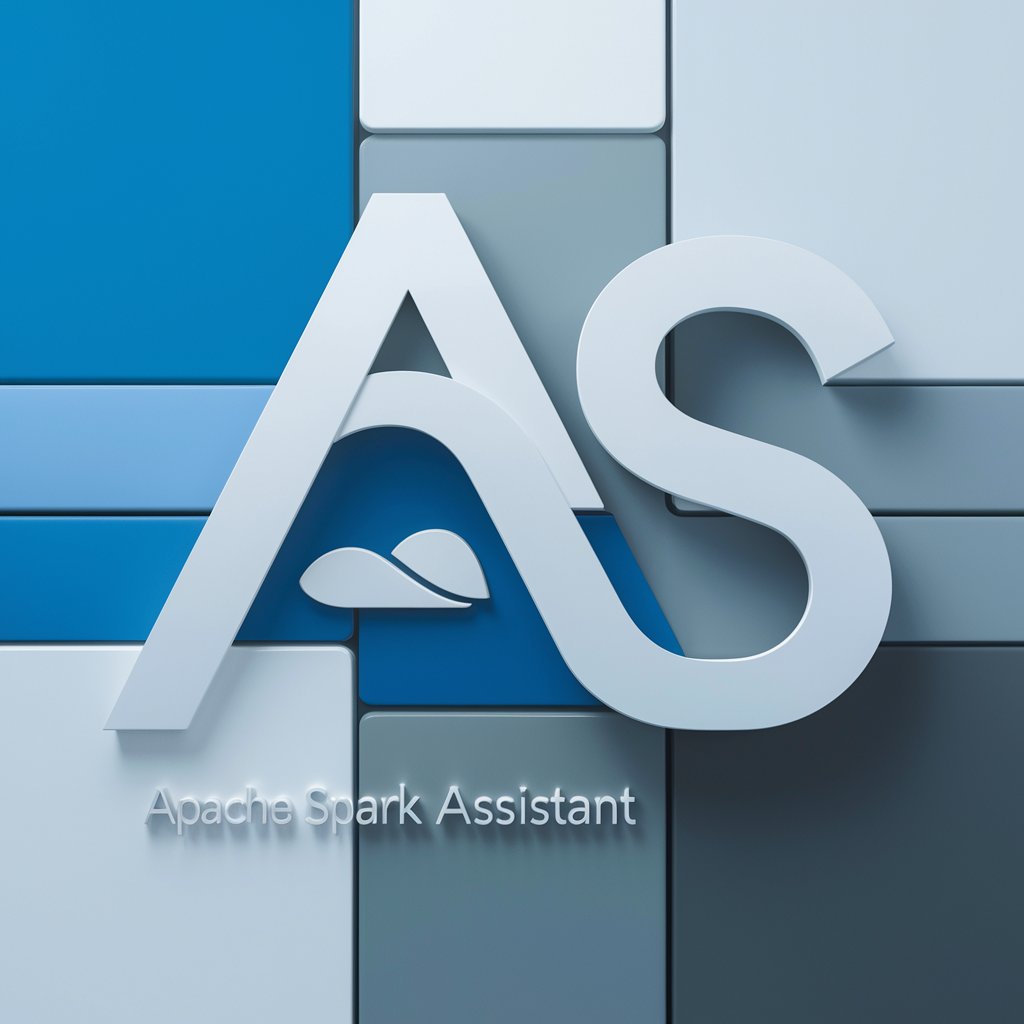
Apache Spark Assistant - Apache Spark Assistance

Welcome to Apache Spark Assistant, your expert guide to Delta Lake and Spark on Databricks.
Empowering your data with AI
How to optimize performance in Delta Lake with the latest features?
What are the best practices for setting up Apache Spark clusters?
How can I integrate Delta Lake with Azure Databricks?
What are the new capabilities introduced in Delta Lake 3.0?
Get Embed Code
Introduction to Apache Spark Assistant
Apache Spark Assistant is a conversational AI tool designed to assist with various Apache Spark-related tasks, including data processing, analytics, and big data pipeline management. It serves as an expert guide, offering insights into the latest advancements in Apache Spark technology, such as Delta Lake 3.0 with its universal format and Liquid Clustering. This assistant provides guidance on implementing, optimizing, and utilizing Apache Spark in Databricks on Microsoft Azure. It is especially useful for learning, troubleshooting, and exploring Spark's extensive capabilities. A typical scenario could be when a user needs to design a big data pipeline, and the assistant guides them through cluster setup, data ingestion, processing, and output to various formats like Parquet, CSV, or JSON. Powered by ChatGPT-4o。

Main Functions of Apache Spark Assistant
Guidance on Apache Spark and Delta Lake
Example
The assistant can explain key concepts of Apache Spark, such as DataFrames, RDDs, SparkSQL, and Delta Lake, offering detailed insights into how they work and how to implement them in a Databricks environment.
Scenario
A data engineer needs to understand how to create and manage Delta Lake tables in Databricks, including data ingestion, querying, and optimizing performance.
Support for Apache Spark Programming
Example
The assistant provides guidance on writing Spark code in various languages (Scala, Python, R), including best practices, code examples, and debugging tips.
Scenario
A user writing a Spark job in PySpark wants to optimize a join operation between two DataFrames and seeks assistance on efficient coding techniques.
Data Engineering and Processing Guidance
Example
Apache Spark Assistant helps with data processing workflows, including creating clusters, scheduling jobs, and managing resources in Databricks.
Scenario
A data engineer wants to set up an ETL pipeline in Databricks and needs step-by-step instructions on cluster configuration, notebook scheduling, and data transformation.
Streaming Data Management
Example
The assistant offers support for working with streaming data in Apache Spark, explaining Structured Streaming concepts and offering solutions for common issues.
Scenario
A data analyst needs to implement a near-real-time data pipeline and requires help with setting up a Spark Structured Streaming job to ingest data from Kafka or Event Hubs.
Security and Compliance
Example
Guidance on setting up security controls in Databricks, managing permissions, and ensuring compliance with data governance standards.
Scenario
An administrator wants to set up role-based access control (RBAC) for a Databricks workspace and ensure that data access is properly secured.
Ideal Users for Apache Spark Assistant
Data Engineers
Data engineers responsible for building and maintaining big data pipelines would benefit from using Apache Spark Assistant to optimize Spark jobs, understand cluster configurations, and implement best practices for data processing.
Data Scientists
Data scientists working on machine learning and analytics projects in Apache Spark can use the assistant to explore Spark's capabilities for data exploration, model training, and experiment tracking.
Data Analysts
Data analysts seeking to extract insights from large datasets can leverage the assistant's knowledge to run ad-hoc queries, create data visualizations, and optimize data processing in Databricks.
System Administrators
Administrators responsible for managing Databricks workspaces and Spark clusters can use the assistant to set up security controls, manage permissions, and ensure compliance with organizational policies.

Using Apache Spark Assistant: A Step-by-Step Guide
Start your free trial
Access yeschat.ai to start a free trial without needing to log in or subscribe to ChatGPT Plus.
Explore documentation
Familiarize yourself with Apache Spark Assistant documentation to understand its capabilities and features.
Identify use cases
Identify and define your specific use cases where Apache Spark Assistant can enhance your Spark and Delta Lake operations.
Set up your environment
Ensure your computational environment is set up to integrate with Apache Spark, including necessary hardware and software.
Experiment and iterate
Experiment with different commands and functions, utilizing Apache Spark Assistant to optimize your data processes and gather insights.
Try other advanced and practical GPTs
Dr. Space 🧑🔬 🚀🛰️📊
Explore the cosmos with AI power

Zombification
Revive Your Media with AI

Skin Sensitization Assessor
AI-powered Chemical Sensitivity Screening

Universal Toxicologist (UTOX)
AI-powered toxicology guidance and expertise.

Toxicologist
Enhance Toxicology with AI

Tweede Kamerverkiezingen 22 november 2023
Unveil Political Landscapes with AI

Spécialiste en Génération d'Idées pour Niches
Discover Niche Markets with AI Power

Niche Navigator
Harness AI to Discover Market Niches

Niche Trendspotter
Your AI Partner for Trending Niches

Dropship GPT Niche and Product Picker
Discover, Analyze, Launch: AI-Powered Dropshipping

Niche Research Prompt Generator
Inspire Your Creativity with AI

Progenitor of the Greys
Explore AI, Grow Smarter

Frequently Asked Questions about Apache Spark Assistant
What is Apache Spark Assistant?
Apache Spark Assistant is an AI-powered tool designed to optimize and enhance your experience with Apache Spark and Delta Lake, providing tailored assistance and advanced functionalities.
How does Apache Spark Assistant integrate with Delta Lake?
The assistant integrates seamlessly with Delta Lake, leveraging new features like the universal format and Liquid Clustering to help manage, optimize, and analyze your data more efficiently.
Can Apache Spark Assistant help with real-time data processing?
Yes, Apache Spark Assistant is equipped to assist in real-time data processing tasks, leveraging Spark’s in-memory processing capabilities to enhance speed and efficiency in data operations.
What are the prerequisites for using Apache Spark Assistant?
The prerequisites include having a computational environment set up for Spark, basic knowledge of Apache Spark and Delta Lake operations, and access to data sources that Spark can process.
How can I optimize my data pipelines using Apache Spark Assistant?
Apache Spark Assistant provides guidance on optimizing data pipelines by suggesting best practices, tuning performance parameters, and implementing efficient data transformation and aggregation techniques.